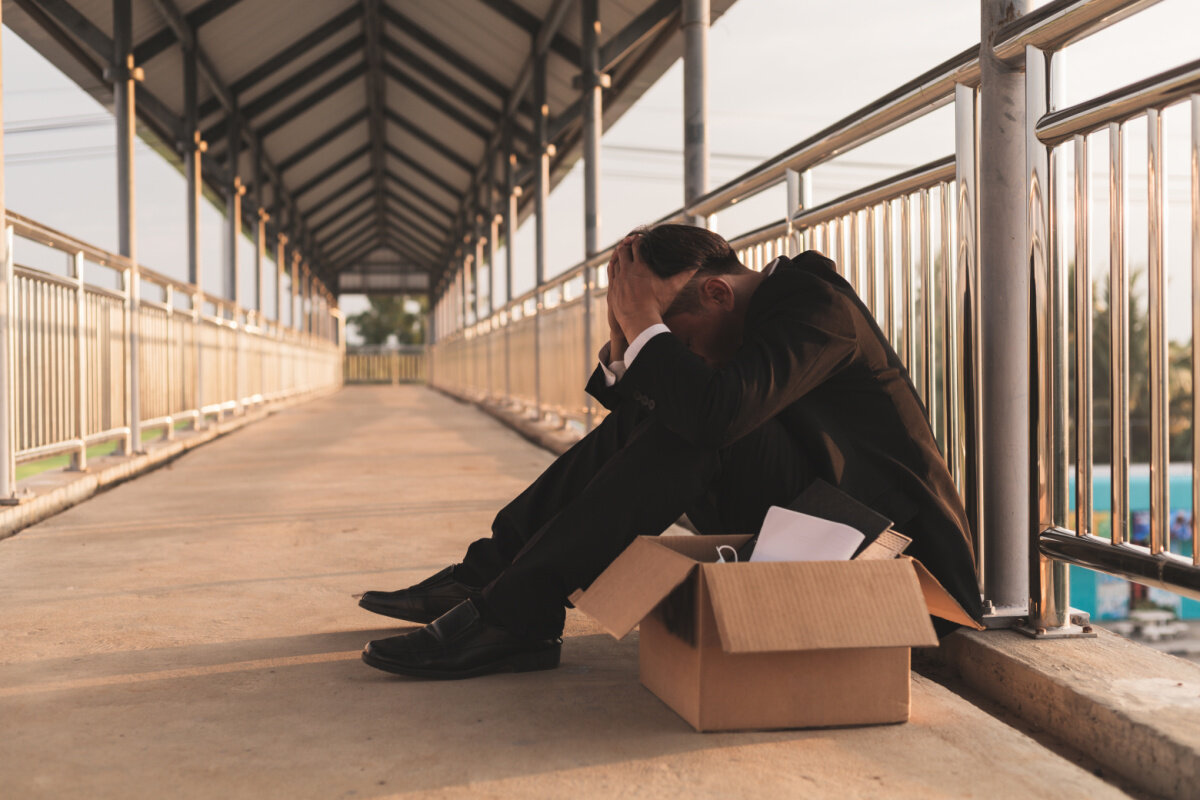With high inflation and housing costs, along with the end of the Covid pandemic stimulus benefits, many Long Islanders are struggling to pay their monthly bills. For those Long Islanders who also face the additional challenge of paying their credit card bills and personal loans, bankruptcy may be a good option to get the financial relief they need. While bankruptcy filings were down over the past few years during the pandemic, they are rapidly increasing again.
New Yorkers who live in Long Island file for bankruptcy, are required to file at the U.S. Bankruptcy Court for the Eastern District of New York located in Central Islip, N.Y. The federal bankruptcy courts have exclusive jurisdiction over bankruptcy cases. The primary purpose of the bankruptcy code is to give debtors the opportunity to obtain a fresh financial start. If you file for bankruptcy with an attorney, your petition would be filed electronically with the Court. However, if you are not represented by an attorney (pro-se), you must go to the Bankruptcy Court in person to file your petition.
The U.S. Bankruptcy Court in Long Island is located within the Eastern District of New York, which is divided into two divisions: Islip and Brooklyn. The Bankruptcy Court for the Islip Division is at the Alfonse M. D’Amato U.S. Courthouse in Islip, NY. It has jurisdiction over bankruptcy cases for debtors that live in Nassau and Suffolk Counties, whereas the Brooklyn Division covers cases for debtors who live in Brooklyn, Queens, and Staten Island. In most cases, a debtor’s residency determines the jurisdiction in a bankruptcy case, therefore you typically need to file a petition in the district in which you reside. So, if you live in Nassau or Suffolk County in New York, you will file your petition at the bankruptcy court in the Islip Division of the Eastern District of New York. In some rare circumstances, a debtor will file for bankruptcy in the federal district that is either the location of their principal place of business, or where the majority of their assets are located. The trustee panel for each division is different, so a debtor in Nassau or Suffolk County will have a different trustee assigned to their case from those debtors in the Brooklyn division.
Filing for Chapter 7 Bankruptcy in Long Island
When a debtor files a petition in Chapter 7 bankruptcy in Long Island, an automatic stay goes into effect. This automatic injunction stays all debt collection activity (including garnishments, frozen bank accounts, and foreclosure sale dates). The debtor is then required to appear at a hearing with a bankruptcy trustee (which is referred to as a 341(a) meeting or meeting of creditors). The trustee will determine if the debtor has any non-exempt assets (for example, non-exempt real estate equity, non-exempt money in a bank or brokerage account, a personal injury case worth more than the applicable exemptions, or a vehicle with unprotected equity, etc.). Those unprotected assets may be liquidated, and the proceeds will be administered by a bankruptcy trustee. The trustee will pay any claims filed by creditors in the case which can be on a percentage basis, depending on the size of the bankruptcy estate. Please note, most Chapter 7 bankruptcy cases are considered no asset cases, and therefore will not have a distribution to pay creditors since all the debtor’s assets are protected by bankruptcy exemptions. At the end of their case, the debtor receives a discharge of their debts and a fresh financial start.
Filing for Chapter 13 Bankruptcy in Long Island
Chapter 13 bankruptcy is where a debtor reorganizes their debt by proposing a repayment plan to pay their debts over a period of up to 60 months, which must be approved by a Bankruptcy Judge. Depending upon the individual circumstances of the case, a debtor may not have to pay back their unsecured debt in full, and any unpaid debt is discharged at the end of the plan. However, debts for secured claims (most commonly mortgage arrears), and priority claims (for example, taxes or child support arrears) must be paid back in full by the plan. When filing for chapter 13 bankruptcy, the debtor is required to make monthly payments to a Bankruptcy Trustee. The trustee will then pay the claims of the creditors in the case. In order to be approved, a Chapter 13 bankruptcy plan must be shown to be feasible, and a debtor must prove that they have sufficient disposable income to afford the monthly payment to the trustee. The plan must pay the creditors at least as much as if the debtor filed for Chapter 7 bankruptcy. At the end of their plan, the debtor receives a discharge order that eliminates any remaining unpaid debt and there are no negative tax consequences that would normally stem from any cancelled debt.
Local Standards for Long Island, NY (For Cases Filed on or After May 15, 2023)
In some cases, a debtor is subject to the Chapter 7 Means Test which is a budget test within the Bankruptcy Code. The Office of United States Trustee provides local standards (based on IRS living standards) that are to be used by residents of Nassau and Suffolk counties in the Means Test. As an example, the current Local Housing and Utilities Standards for both counties are as follows:
Local Standards for Nassau County, NY
- Household of 1: Utilities $685 and Mortgage/Rent $2,710
- Household of 2: Utilities $804 and Mortgage/Rent $3,184
- Household of 3: Utilities $847 and Mortgage/Rent $3,355
- Household of 4: Utilities $945 and Mortgage/Rent $3,740
- Household of 5 or more: Utilities $960 and Mortgage/Rent $3,801
Local Standards for Suffolk County, NY
- Household of 1: Utilities $673 and Mortgage/Rent $2,296
- Household of 2: Utilities $790 and Mortgage/Rent $2,697
- Household of 3: Utilities $833 and Mortgage/Rent $2,841
- Household of 4: Utilities $929 and Mortgage/Rent $3,168
- Household of 5 or more: Utilities $944 and Mortgage/Rent $3,219
As seen above, these expenses may not actually reflect a debtor’s real cost of housing and utilities for living in Long Island. If a debtor fails the Means Test, they are restricted to filing for Chapter 13 bankruptcy. However, due to the typically higher mortgage payments when owning a home in Long Island, combined with higher escrow costs for taxes and insurance, debtors in Long Island who are subject to the Means Test, may have an easier time passing it.
Remote Hearings
Since the Covid pandemic, almost all hearings in the Islip Division for the Eastern District of New York have been held remotely. These remote hearings have been held either via telephone or via the Zoom video conference platform. All 341(a) Meetings of Creditors in the Eastern District are being held telephonically and only a few judges have been requiring video appearances via Zoom. However, this is about to change in the Islip Division. Effective July 10, 2023, some the bankruptcy judges in Long Island will be requiring in person appearances:
- Judge Scarcella
All matters before Judge Scarcella will be conducted in person in Courtroom 970, unless otherwise ordered by the Court. - Judge Grossman
All hearings will be held in person, with the exception of the Chapter 13 calendar which will be conducted telephonically. - Judge Trust
Status conferences and all motions filed in all chapter 11 cases other than in cases pending under Subchapter V will be held in person, as well as evidentiary hearings in all adversary proceedings and contested matters in all chapters in which live testimony will be taken will require in person appearances
Contact the Law Offices of David I Pankin, PC
For over 25 years, the Law Offices of David I. Pankin, P.C. has been helping residents of Long Island file for bankruptcy. If you live in Long Island and are contemplating filing for bankruptcy, please contact our office to schedule a free consultation with an experienced bankruptcy lawyer. We can be reached by phone at 888-529-9600 or by using our easy online contact form.






